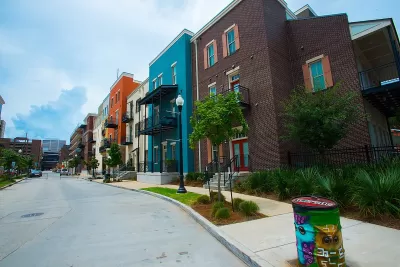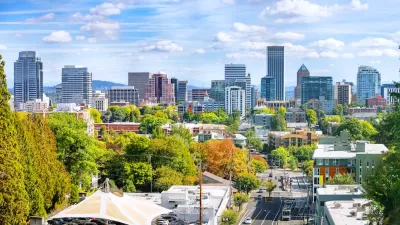For such a commonly used term, “affordable housing” means a lot of different things to different people and in different contexts.For such a commonly used term, “affordable housing” means a lot of different things to different people and in different contexts.

The term "affordable housing" gets tossed around frequently in policy discussions and development debates, but its meaning is far from simple. A new Shelterforce explainer breaks down this complex term, offering crucial context for planners, policymakers, and community development practitioners.
At its most basic, housing affordability hinges on a simple concept: after paying for housing, do residents have enough left for other basic needs? While this sounds straightforward, measuring it proves complex. The industry standard — the 30 percent rule — suggests housing costs should consume no more than 30 percent of household income. Yet this benchmark, while useful for middle-income households, breaks down at both extremes of the income spectrum.
The complexity deepens when examining specific affordable housing initiatives. Projects labeled as "affordable" can target vastly different income levels and populations, from extremely low-income supportive housing to moderate-income workforce developments. Programs like the Low Income Housing Tax Credit typically serve households making 40 to 60 percent of area median income, while Section 8 vouchers reach even lower-income residents. Meanwhile, what counts as affordable in high-cost coastal cities might align with market rates in other regions.
Understanding these nuances is crucial for planners, policymakers, and advocates working to address the housing crisis. Effective housing policy requires moving beyond simple labels to examine who exactly is being served, how affordability is achieved, and how long it will last.
FULL STORY: What Is ‘Affordable Housing’?

Planetizen Federal Action Tracker
A weekly monitor of how Trump’s orders and actions are impacting planners and planning in America.

Map: Where Senate Republicans Want to Sell Your Public Lands
For public land advocates, the Senate Republicans’ proposal to sell millions of acres of public land in the West is “the biggest fight of their careers.”

Restaurant Patios Were a Pandemic Win — Why Were They so Hard to Keep?
Social distancing requirements and changes in travel patterns prompted cities to pilot new uses for street and sidewalk space. Then it got complicated.

Platform Pilsner: Vancouver Transit Agency Releases... a Beer?
TransLink will receive a portion of every sale of the four-pack.

Toronto Weighs Cheaper Transit, Parking Hikes for Major Events
Special event rates would take effect during large festivals, sports games and concerts to ‘discourage driving, manage congestion and free up space for transit.”

Berlin to Consider Car-Free Zone Larger Than Manhattan
The area bound by the 22-mile Ringbahn would still allow 12 uses of a private automobile per year per person, and several other exemptions.
Urban Design for Planners 1: Software Tools
This six-course series explores essential urban design concepts using open source software and equips planners with the tools they need to participate fully in the urban design process.
Planning for Universal Design
Learn the tools for implementing Universal Design in planning regulations.
Heyer Gruel & Associates PA
JM Goldson LLC
Custer County Colorado
City of Camden Redevelopment Agency
City of Astoria
Transportation Research & Education Center (TREC) at Portland State University
Camden Redevelopment Agency
City of Claremont
Municipality of Princeton (NJ)





























